What Are Common Mistakes in Cat Socialization?
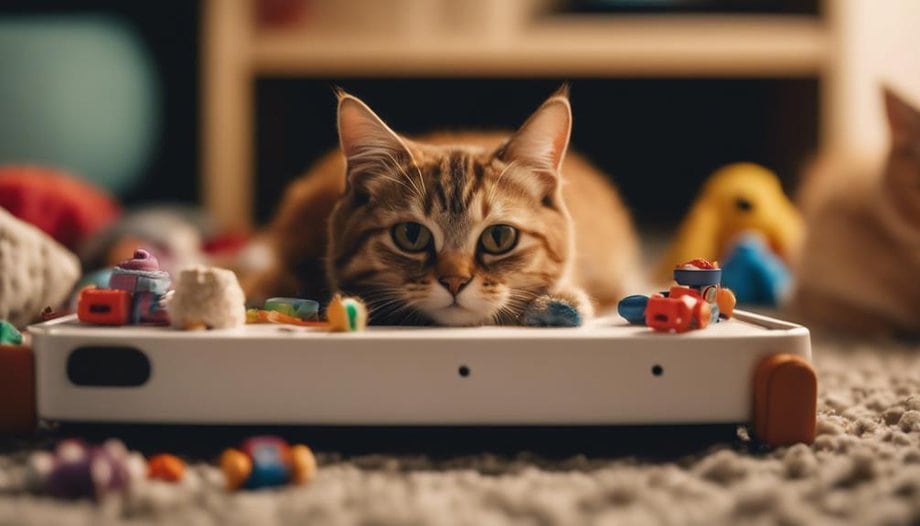
Socializing a cat is an important process that helps them feel comfortable and secure in their environment. However, there are some common mistakes that cat owners make when trying to socialize their feline friends.
One common mistake is rushing the process. Cats are creatures of habit and can be easily overwhelmed by new people or environments. It's important to take things slow and allow your cat to adjust at their own pace.
Another mistake is not providing enough positive reinforcement. Cats respond well to treats, praise, and playtime as rewards for good behavior. By using positive reinforcement, you can help your cat associate socialization with positive experiences.
Lastly, some cat owners make the mistake of forcing their cat to socialize. It's important to remember that not all cats are social creatures, and some may prefer to be alone. It's essential to respect your cat's boundaries and not force them into social situations that make them uncomfortable.
By avoiding these common mistakes and taking the time to socialize your cat properly, you can help them feel more at ease and confident in their surroundings.
Misinterpreting Cat Body Language
Misinterpreting cat body language can lead to misunderstandings and potential conflicts between cats and their owners. Recognizing subtleties in feline behavior is crucial for building trust and establishing boundaries. Cats communicate through a combination of vocalizations, body postures, and facial expressions. Misunderstanding cues such as a flicking tail, dilated pupils, flattened ears, or a tense body can result in misinterpretations of the cat's emotional state.
To avoid conflicts, it's essential for cat owners to educate themselves on common feline behaviors and signals. Building a strong bond with a cat starts by respecting their boundaries and understanding their communication styles. By learning to recognize when a cat is feeling anxious, scared, or playful, owners can respond appropriately and create a harmonious environment for their feline companions.
Taking the time to observe and learn about cat body language can significantly improve the relationship between cats and their owners. Clear communication and mutual understanding are key elements in fostering a positive and fulfilling bond with a cat.
Rushing Introductions With Other Pets
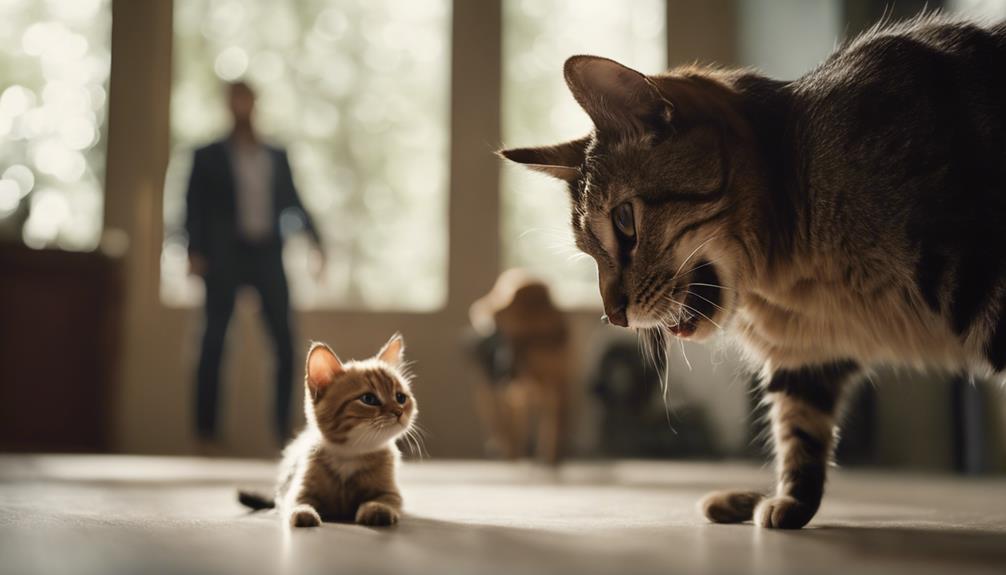
To ensure a successful integration of new pets into a household, it's crucial for cat owners to approach introductions with patience and gradual steps. Rushing introductions with other pets can lead to stress, anxiety, and potential conflicts among the animals. Slow introductions allow the cats to adjust to each other's presence, reducing the likelihood of aggressive behavior and ensuring a smoother transition. Patience is key in giving the cats time to acclimate to the new dynamics and form positive associations with each other. Gradual bonding and trust building are essential components of introducing cats to other pets, promoting a harmonious relationship over time.
Here are some tips to help cat owners navigate introductions successfully:
- Create separate spaces: Provide separate areas for the new and resident pets to retreat to when needed.
- Use scent swapping: Exchange bedding or toys between the cats to familiarize them with each other's scent.
- Supervised interactions: Monitor interactions between the cats closely to intervene if needed.
- Reward positive behavior: Encourage good behavior with treats and praise to reinforce positive associations.
Ignoring Individual Cat Preferences
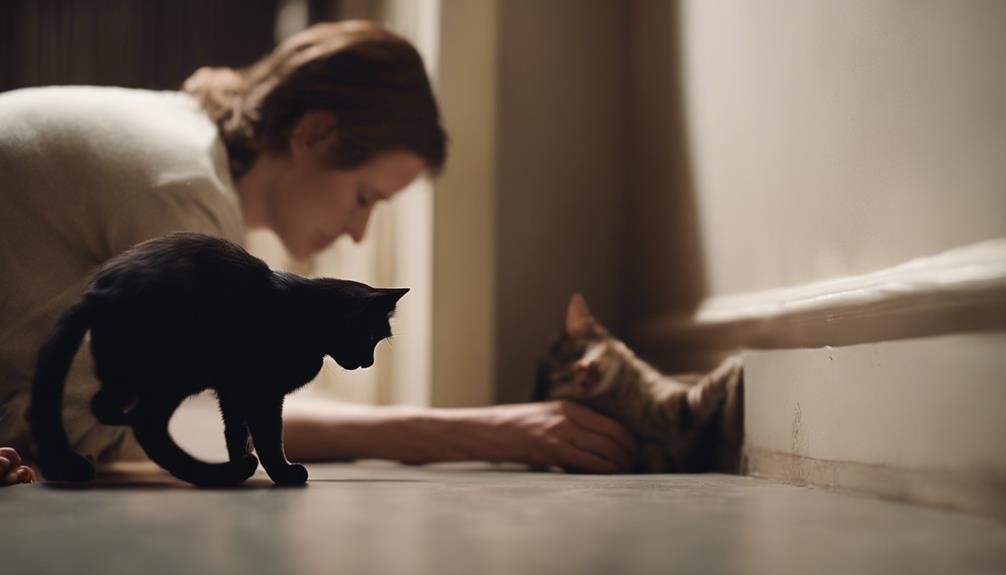
Cat owners should pay attention to the individual preferences of each cat in a multi-cat household to ensure a harmonious living environment. Cats, like people, have unique personalities and needs. Ignoring these individual preferences can lead to tension and conflicts among feline housemates. One crucial aspect to consider is personal space. Some cats may prefer more solitude and have specific areas where they feel safe and comfortable. It's essential to provide hiding spots, elevated perches, or separate resting areas to accommodate these preferences.
Additionally, understanding each cat's communication cues is vital in addressing their needs. Cats communicate through body language, vocalizations, and behavior. By paying attention to how each cat interacts with their environment and other pets, owners can better understand their likes and dislikes. For example, one cat might enjoy social interactions and playtime, while another prefers quiet moments alone. Respecting these preferences fosters a positive environment where each cat feels valued and understood.
Overstimulating During Playtime
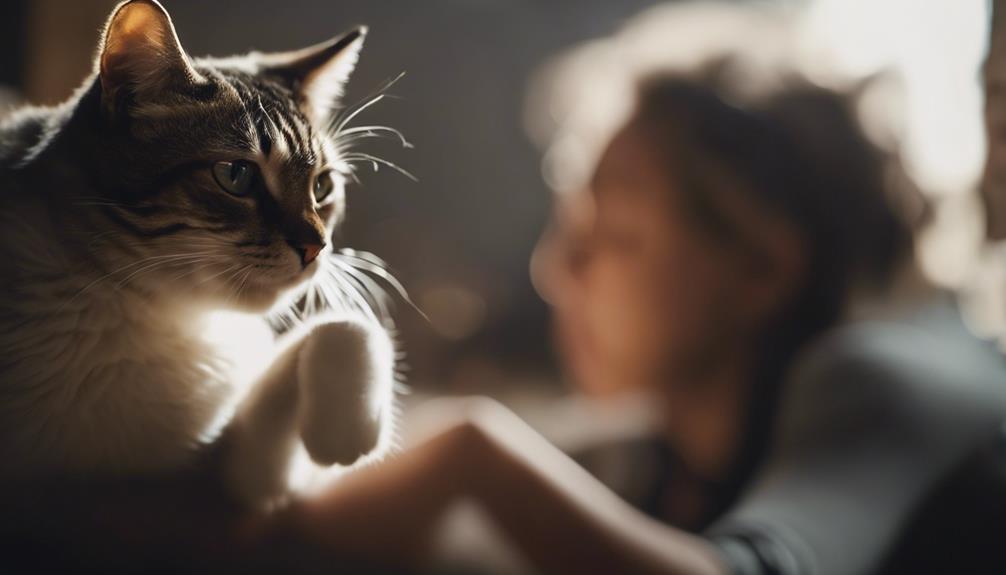
When engaging in playtime with cats, it's crucial to set boundaries to avoid overstimulation. Reading cat body language can help determine when they've had enough and need a break.
Taking regular breaks during play sessions is essential to prevent overwhelming your feline friend.
Playtime Boundaries for Cats
What signs indicate that a cat is becoming overstimulated during playtime? Cats can easily become overstimulated during play, which can lead to negative behaviors. Some signs that a cat may be reaching their limit include:
- Tail lashing or thumping
- Ears pinned back
- Dilated pupils
- Hissing or growling
To prevent overstimulation, it's essential to set limits during playtime and be mindful of the cat's body language. Using interactive toys can help engage the cat without pushing them over the edge. By paying attention to these cues and adjusting the play accordingly, cat owners can ensure that playtime remains a positive and enjoyable experience for both the cat and themselves.
Reading Cat Body Language
Recognizing signs of overstimulation in cats during playtime is crucial for maintaining a positive interaction and preventing negative behaviors. Understanding subtle cues such as tail flicking, flattened ears, or dilated pupils can help cat owners gauge their feline's comfort levels.
Cats communicate through body language, and observing these signals can prevent overstimulation that may lead to aggression or fear. Building trust through observation is key; taking breaks when signs of overstimulation appear can help maintain a healthy play environment.
Importance of Breaks
Understanding the importance of taking breaks during playtime with cats can help prevent overstimulation and maintain a positive interaction. It's vital to strike a balance between engaging play and moments of rest to ensure the cat's well-being and enjoyment.
Here are some key points to remember:
- Break time balance: Ensure that play sessions are interspersed with short breaks to allow the cat to recharge.
- Reading cues: Pay attention to the cat's body language for signs of fatigue or overstimulation.
- Socialization pauses: Incorporate brief pauses to pet or groom the cat during play to strengthen the bond.
- Adjust intensity: Moderate the play intensity based on the cat's responses to avoid overwhelming them.
Lack of Positive Reinforcement
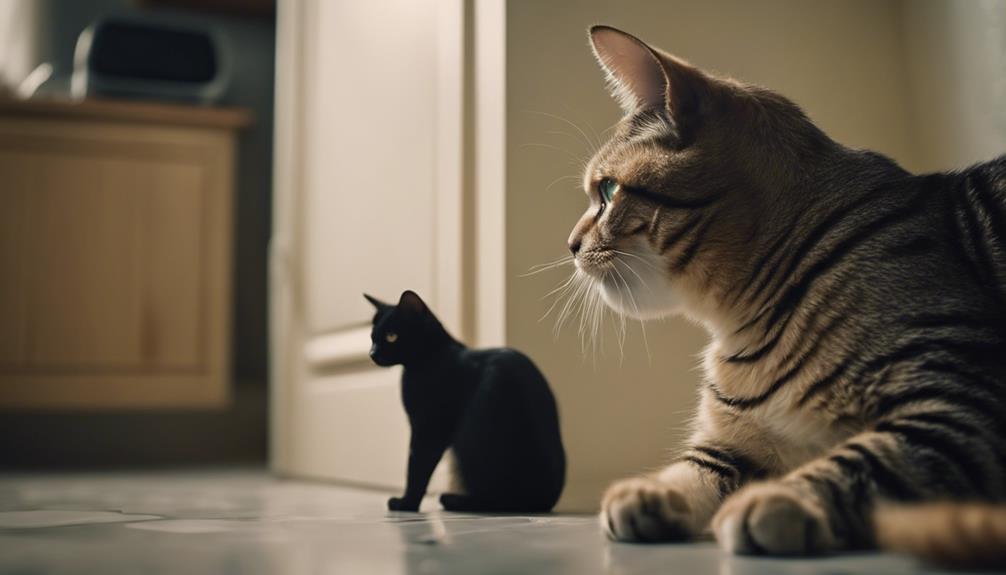
Cat socialization often lacks positive reinforcement, hindering the development of desirable behavior in felines. Positive reinforcement, such as reward-based training, plays a crucial role in shaping a cat's behavior by rewarding good actions, making them more likely to be repeated. Without this reinforcement, cats may not understand what behaviors are desirable, leading to confusion and potential behavioral issues.
Incorporating positive reinforcement techniques not only helps in training cats but also aids in confidence building and trust building between the cat and its owner. When a cat receives praise, treats, or playtime for displaying positive behaviors, it helps them feel more secure and comfortable in their environment. This, in turn, fosters a stronger bond between the cat and its human companions.
Inconsistent Socialization Efforts
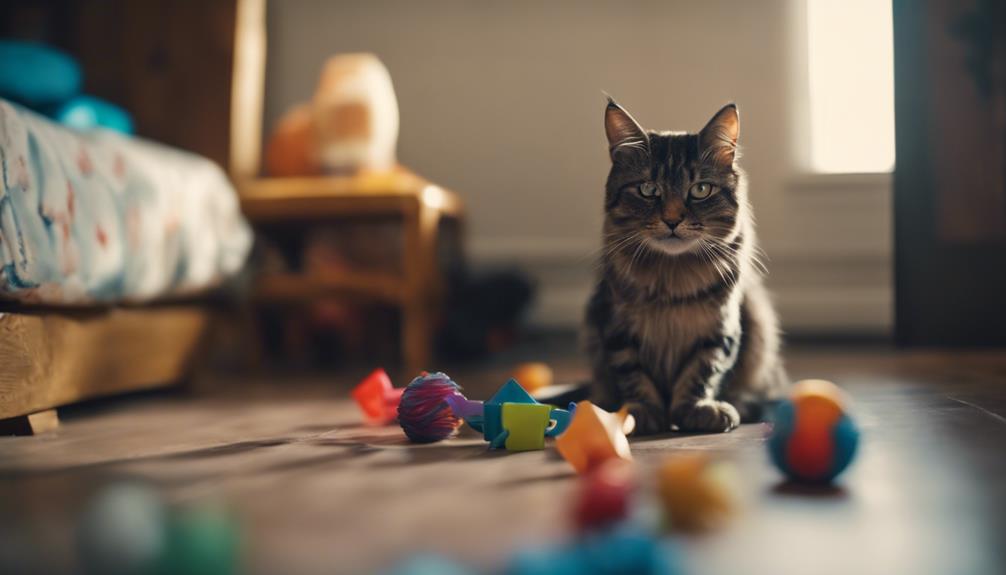
Insufficient consistency in socialization efforts can impede a cat's ability to adapt and thrive in various social settings. When it comes to socializing cats, maintaining a regular and predictable routine is crucial for their development. Inconsistent socialization efforts can lead to confusion and stress, hindering the cat's progress in becoming comfortable with new experiences and people.
To ensure effective socialization, it's essential to establish a structured approach and stick to it diligently. Here are some key points to consider:
- Socialization consistency: Regularly exposing the cat to different environments, sounds, and people helps them become more accustomed to various stimuli.
- Training methods: Using positive reinforcement techniques consistently can reinforce desirable behaviors and encourage social interaction.
- Building trust: Cats need time to trust their environment and the individuals around them, so a gradual approach is essential.
- Gradual approach: Introducing new experiences in small steps allows the cat to adjust at their own pace, reducing stress and fear responses.
Not Providing Safe Hiding Spots
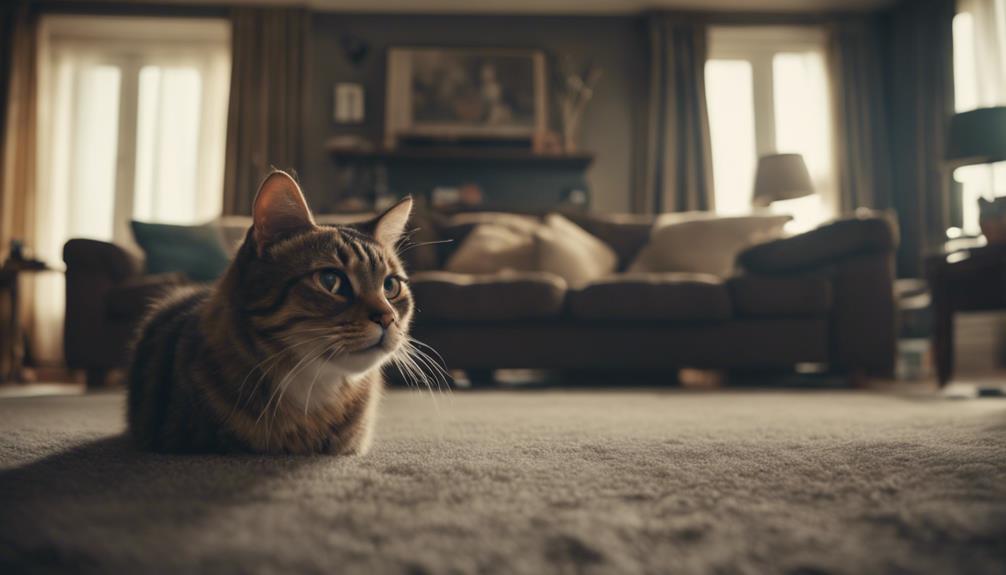
One key aspect often overlooked in cat socialization is the importance of providing safe hiding spots for the feline companions. Cats, by nature, are solitary and territorial animals, and they often seek out secluded areas where they can feel secure. Failing to offer safe hiding spots can lead to increased stress and anxiety in cats, hindering the socialization process.
Creating trust and building confidence are essential components of successful cat socialization. Safe hiding spots act as retreats where cats can feel protected while they observe and interact with their environment at their own pace. These spots provide cats with a sense of security, allowing them to gradually acclimate to new people, animals, or situations.
Frequently Asked Questions
How Can I Train My Cat to Perform Tricks During Socialization?
To train a cat in performing tricks during socialization, use clicker training and positive reinforcement techniques. Start with basic commands like sit and stay, then progress to more advanced tricks. Incorporate agility and target training for mental stimulation.
What Are Some Recommended Toys to Use During Playtime for Socialization?
During playtime for socialization, interactive toys like puzzle feeders and laser pointers can engage cats. Enrichment activities, such as food-dispensing balls, promote mental stimulation. Positive reinforcement and clicker training techniques can enhance the bond between the cat and the owner.
Are There Specific Breeds of Cats That Require Different Socialization Techniques?
Certain cat breeds may require tailored socialization techniques due to their unique characteristics. Training methods, handling fears, and building trust play key roles in successfully socializing these breeds. Understanding their specific needs is crucial for effective socialization.
How Can I Prevent My Cat From Scratching or Biting During Socialization?
To prevent a cat from scratching or biting during socialization, it's essential to focus on behavioral training and use positive reinforcement. Understanding cat behavior and body language can help in recognizing warning signs and addressing issues effectively.
Can I Socialize My Cat if They Have Had a Traumatic Past Experience With Other Pets?
When helping a cat with a traumatic past around other pets, trust building exercises and gradual introductions are key. Patience and understanding will go a long way in creating a safe environment for the cat to heal and socialize.











